Learn to feed sourdough starter in a way that doesn’t make you feel chained to the kitchen or left wondering if the Blob will take over. With just water, flour, and a kitchen scale, feeding sourdough starter will be an easy weekly task that allows you to enjoy lots of sourdough bread recipes.
Once you have your own sourdough starter going, you can enjoy Sourdough Pizza, freshly baked Sourdough Rye Bread, and even Sourdough French Toast.
Want to save this post?
Enter your email below and get it sent straight to your inbox. Plus, I’ll send you budget recipes and money-saving tips every week!
Jump to:
Sourdough bread is so incredibly tasty, and sourdough baking is actually pretty easy to do. There’s a world of possibilities in what you can make, from crumpets to pizza crust to delicious sourdough breads and rolls for sandwiches and sides.
But first you need to get in the habit of feeding sourdough starter so it’s all ready and waiting for when you want to bake.
Let me assure you that this process takes me no more than a few minutes of active time each week.
Feeding sourdough starter and working it into all kinds of amazing dishes is actually a fairly passive activity. And a delicious one at that.
Why Bake with Sourdough
It’s easy. The good thing about sourdough bread baking is that it’s easy. Our grandmothers and their grandmothers before them used a sourdough starter instead of commercial yeast for years. We, with all our newfangled technology, can do it all the more easily.
It’s economical. If anyone in your home eats sandwiches, you know that bread from the store is not cheap. Not even the cheap kind is cheap. You can replace mediocre $6 loaves with exceptional, artisan-style sourdough bread for about a buck a boule!
Sourdough bread is delicious! Homemade sourdough bread is so tasty. You’ll feel like a rockstar baker once you master feeding sourdough starter and keeping it active.
What You’ll Need for Feeding Sourdough Starter
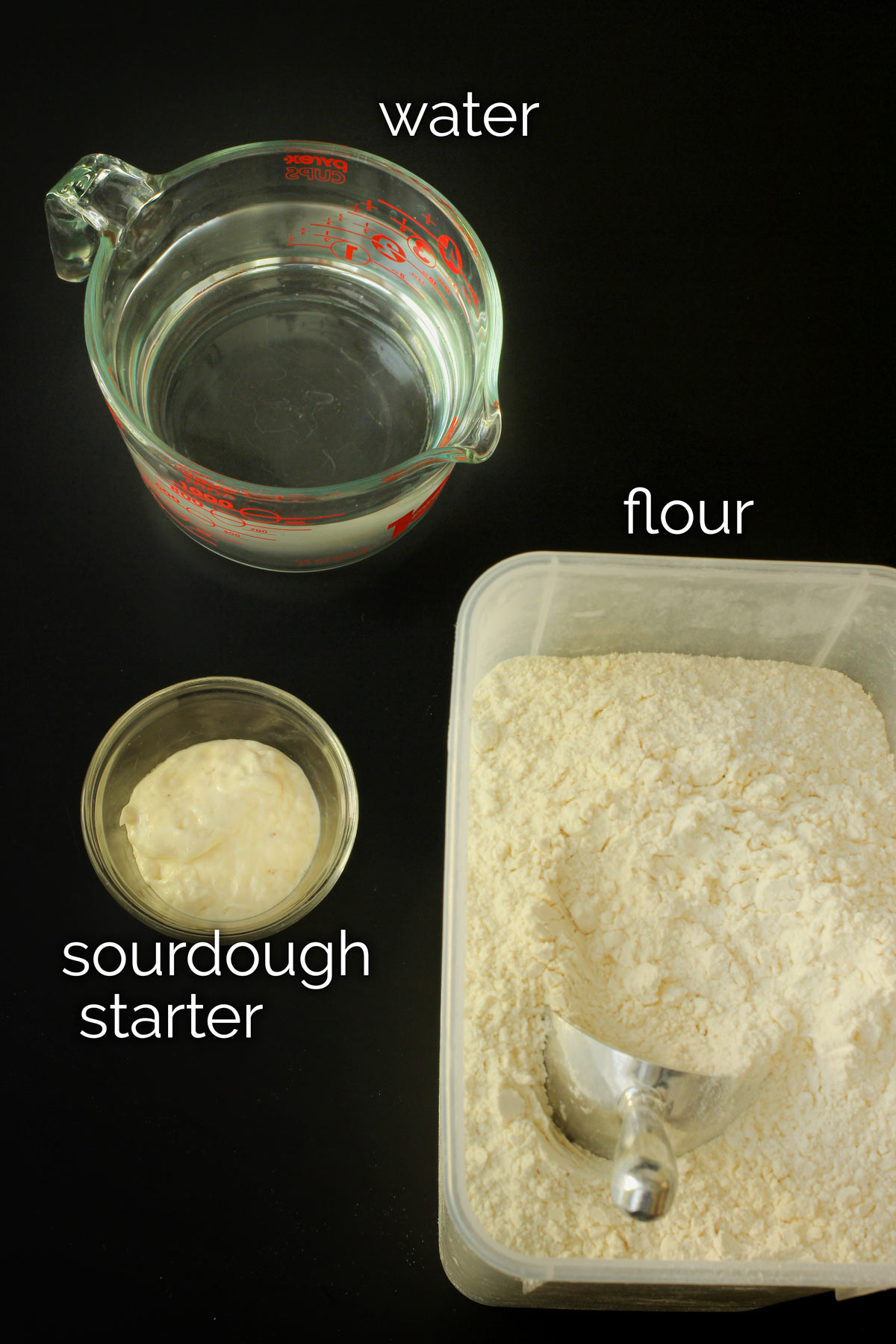
You’ll need equal parts of starter, flour, and water for feeding and maintaining an active sourdough starter:
sourdough starter – You can buy a starter online, get some from a friend like I did, or build your own from flour and water. I’ve never had success with sourdough starter recipes, so I’ve always used a commercial sourdough starter, or one from a friend.
flour – I have found that cheap flour doesn’t make for a good sourdough starter. In fact, Gold Medal has been the worst. I use one of these three brands of unbleached, all-purpose flour: Bob’s Red Mill, King Arthur, or Montana Wheat. The latter is the most affordable and readily available at Walmart. While you can use whole wheat flour for sourdough starter feed, I prefer to use unbleached all purpose flour or bread flour for my starter flour.
water – I used filtered water, but there’s some debate about what’s best.
Step-by Step Instructions
If you are starting from scratch, follow the instructions on the package of sourdough starter to rehydrate it and get it going.
If you get some sourdough starter from a friend, give it a starter feeding so that it’s bubbly and ready to go.
Feeding sourdough starter:
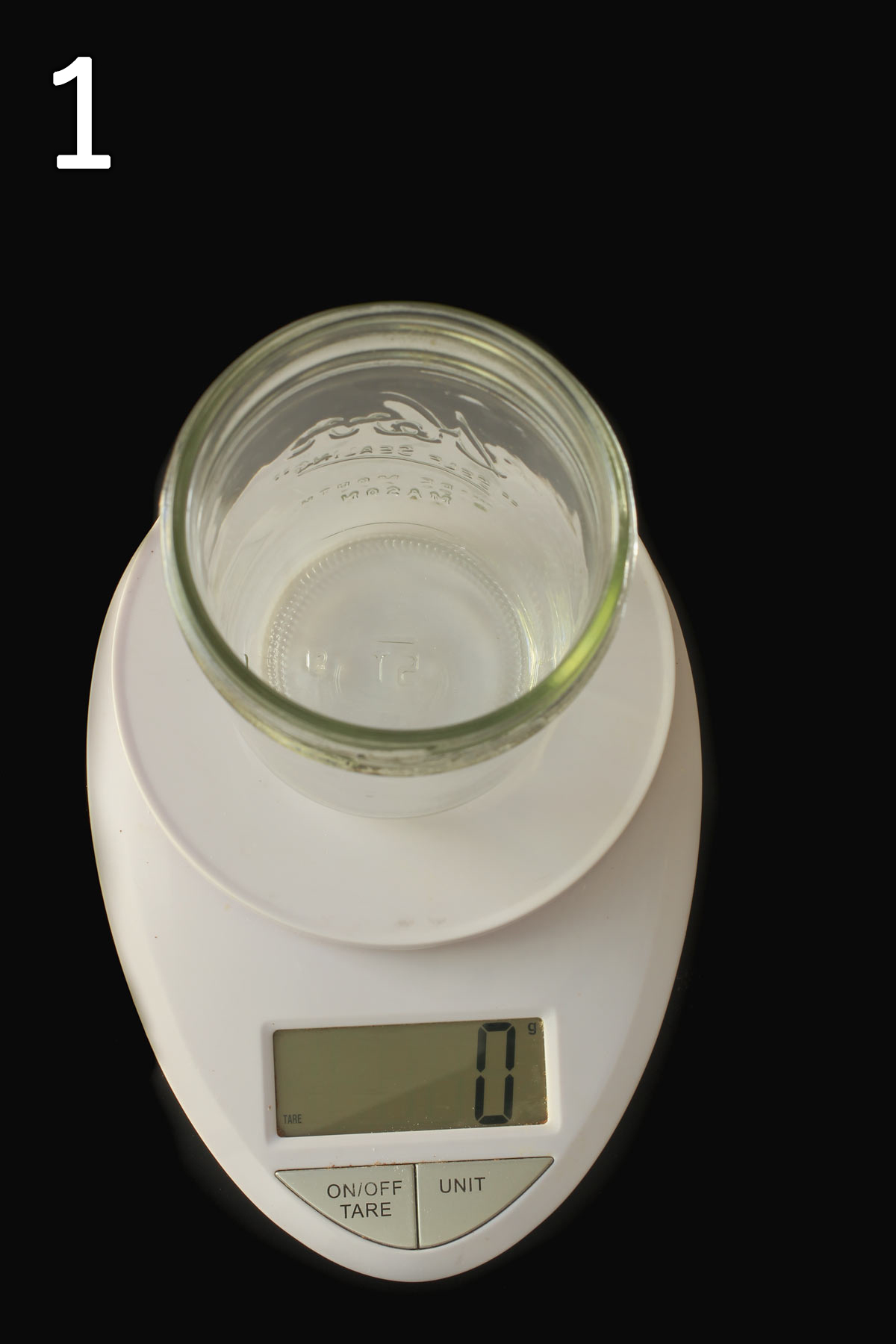
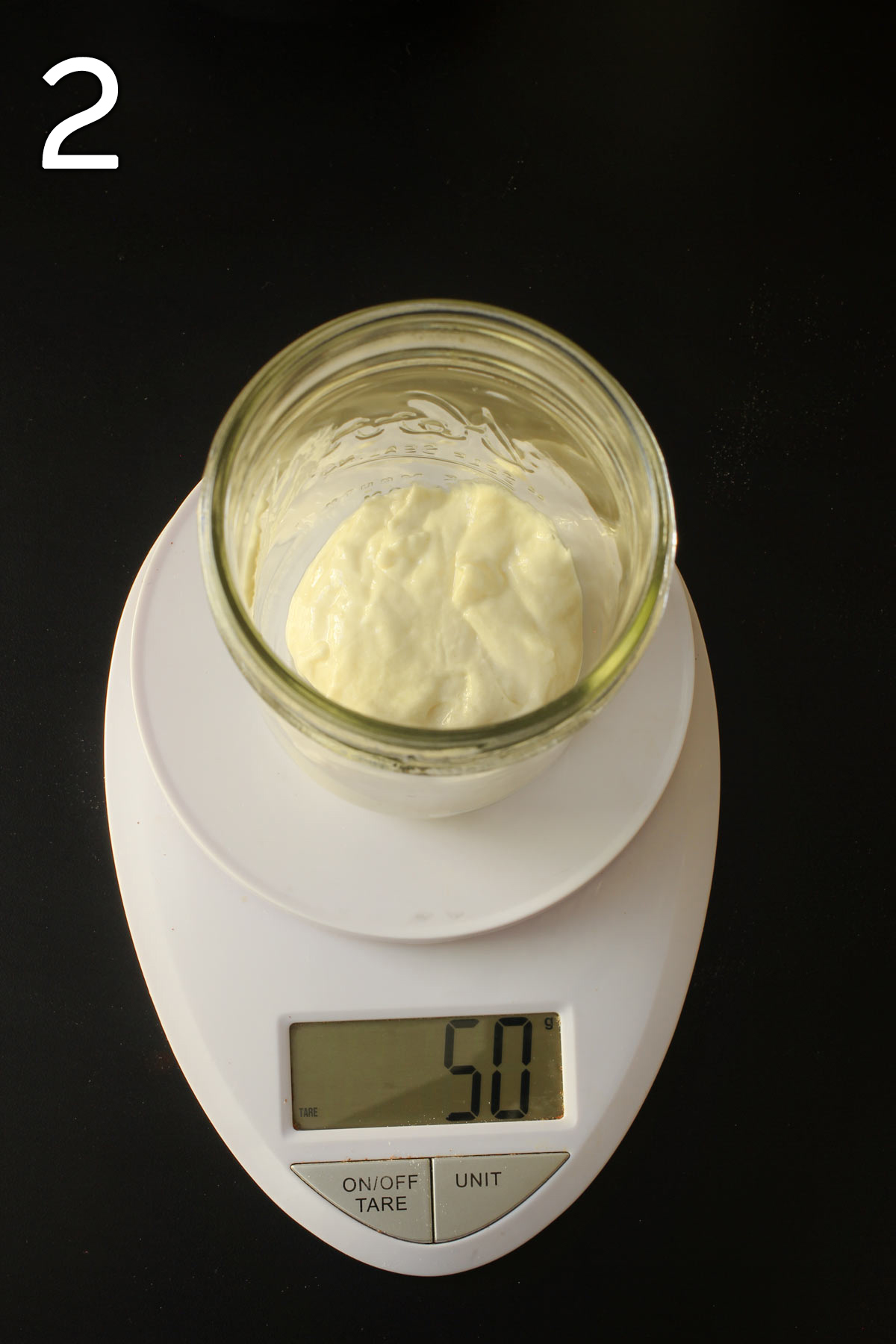
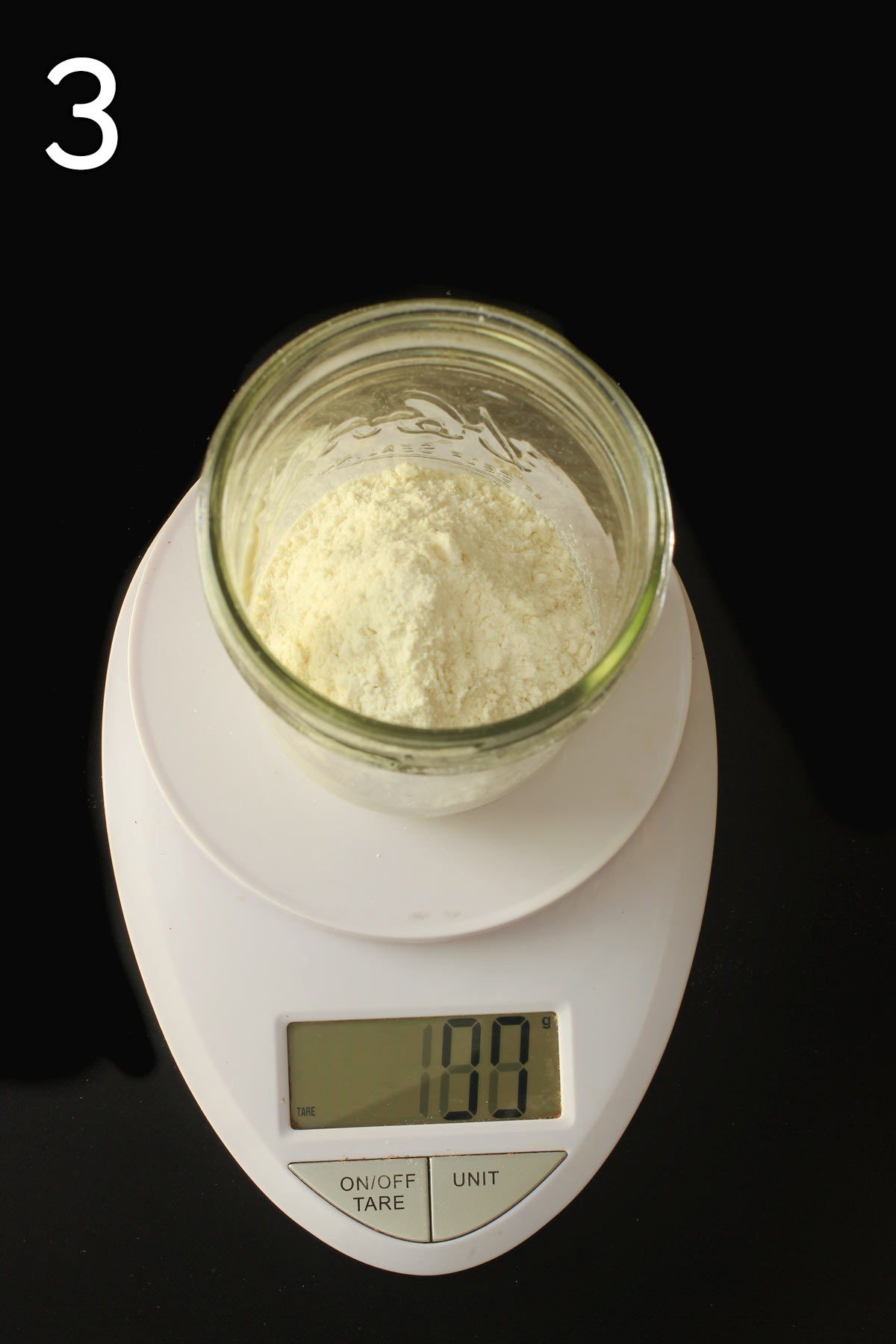
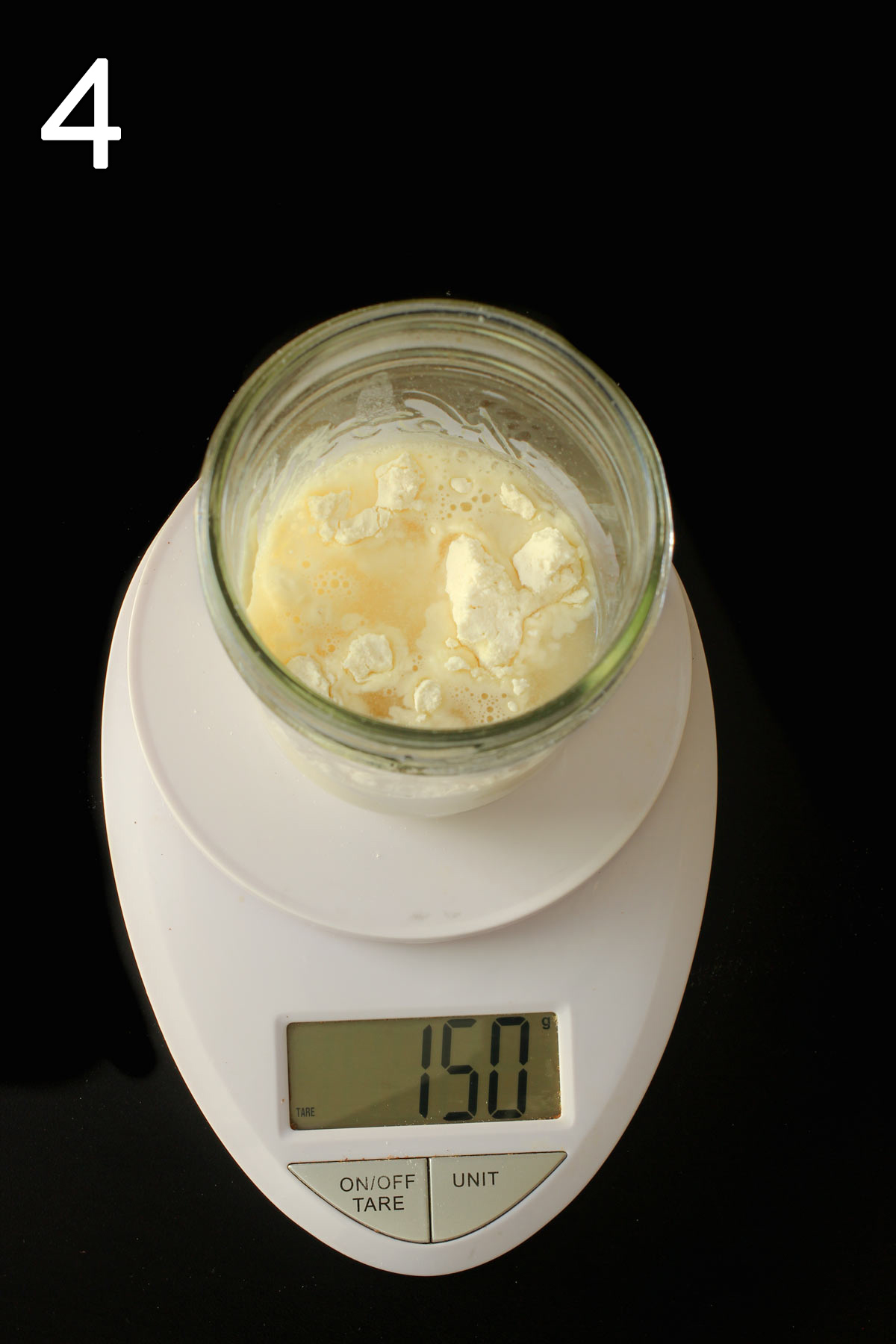
1. Zero out the scale.
I use a scale to measure flour properly, so it makes sense to use a scale for feeding sourdough starter. Place your jar or container on the scale and zero it out. This means that the scale won’t count the weight of the container. (This is the scale I use.) I use.)
2. Weigh the starter.
You don’t need a lot of sourdough starter. Trust me. It grows quickly and you can easily have too much. 50 grams is good to feed.
3. Add an equal weight of flour.
Add an equal amount of flour to the container, in this case 50 grams.
4. Add an equal weight of water.
Add an equal amount of water to the container, in this case 50 grams.
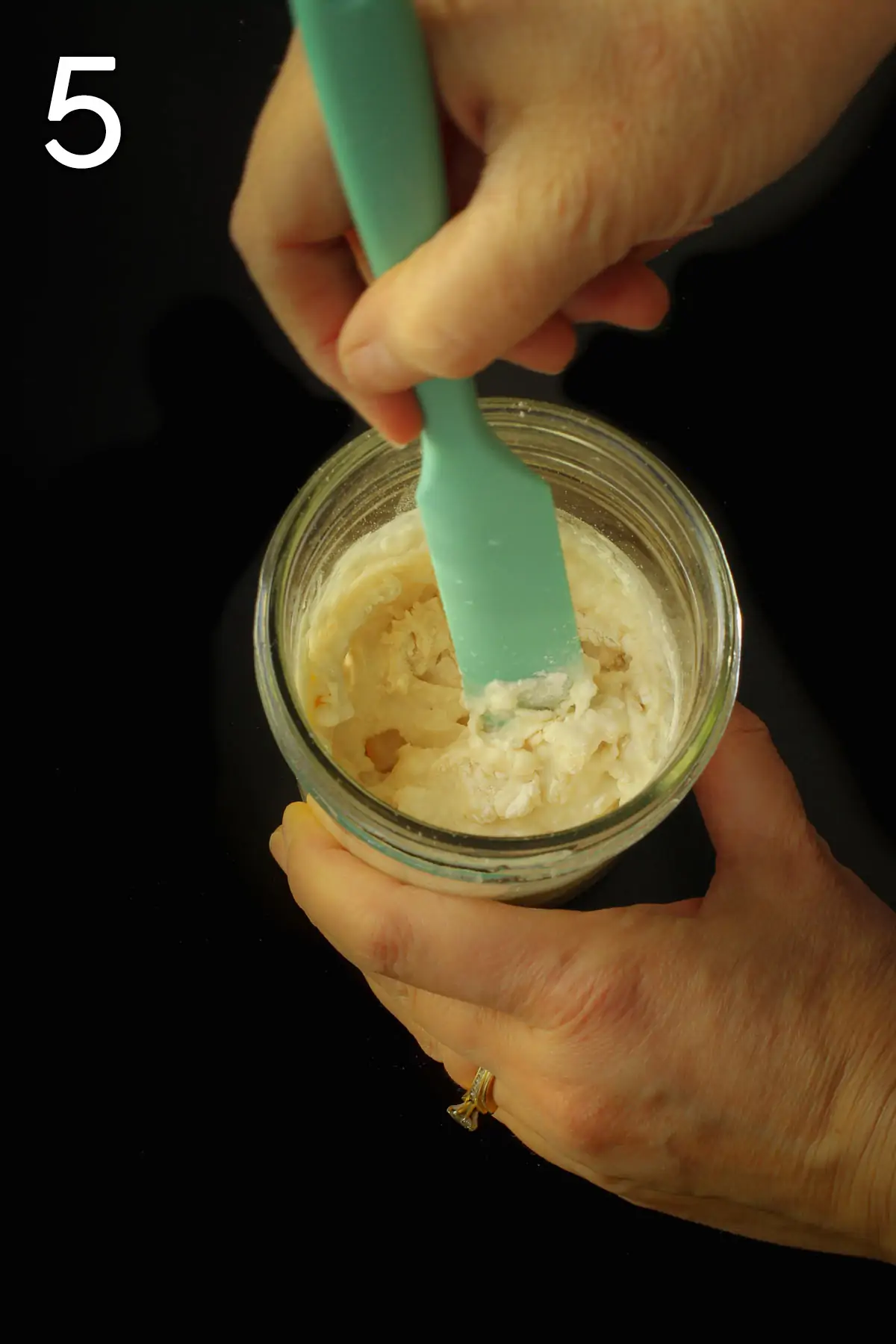
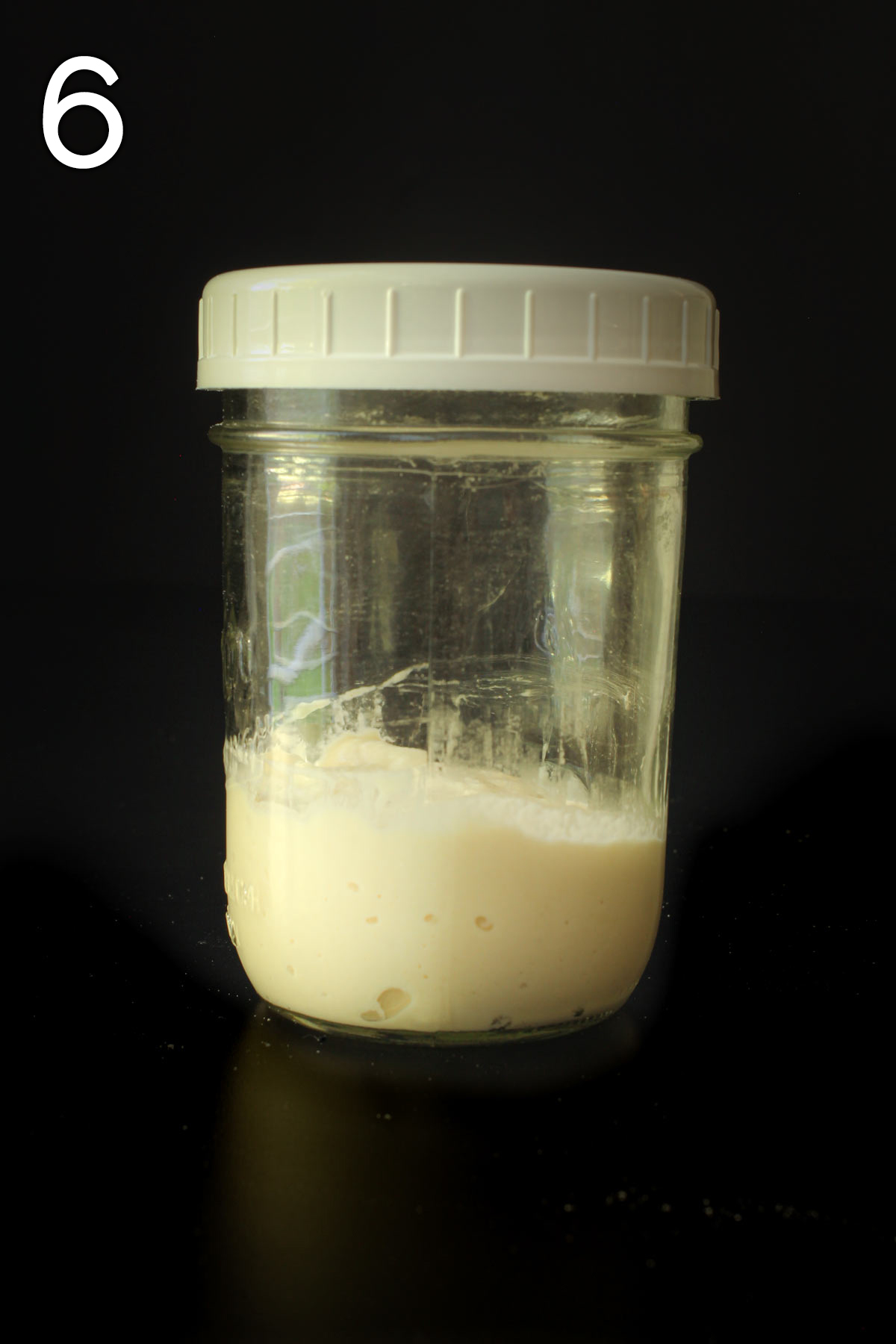
5. Stir the ingredients together.
Stir the sourdough starter, flour, and water together well. You can use a fork, a thin spatula, or if you have a larger amount of starter, a dough whisk.
6. Cover the sourdough starter.
Cover the container loosely. You need room for the gases to be able to escape the jar, or else the pressure might actually break the jar. Set it on the counter to do its work or store it in the fridge if you won’t be using it for a few days.
The starter will rise and fall within 12 to 24 hours, depending on the temperature in your kitchen.
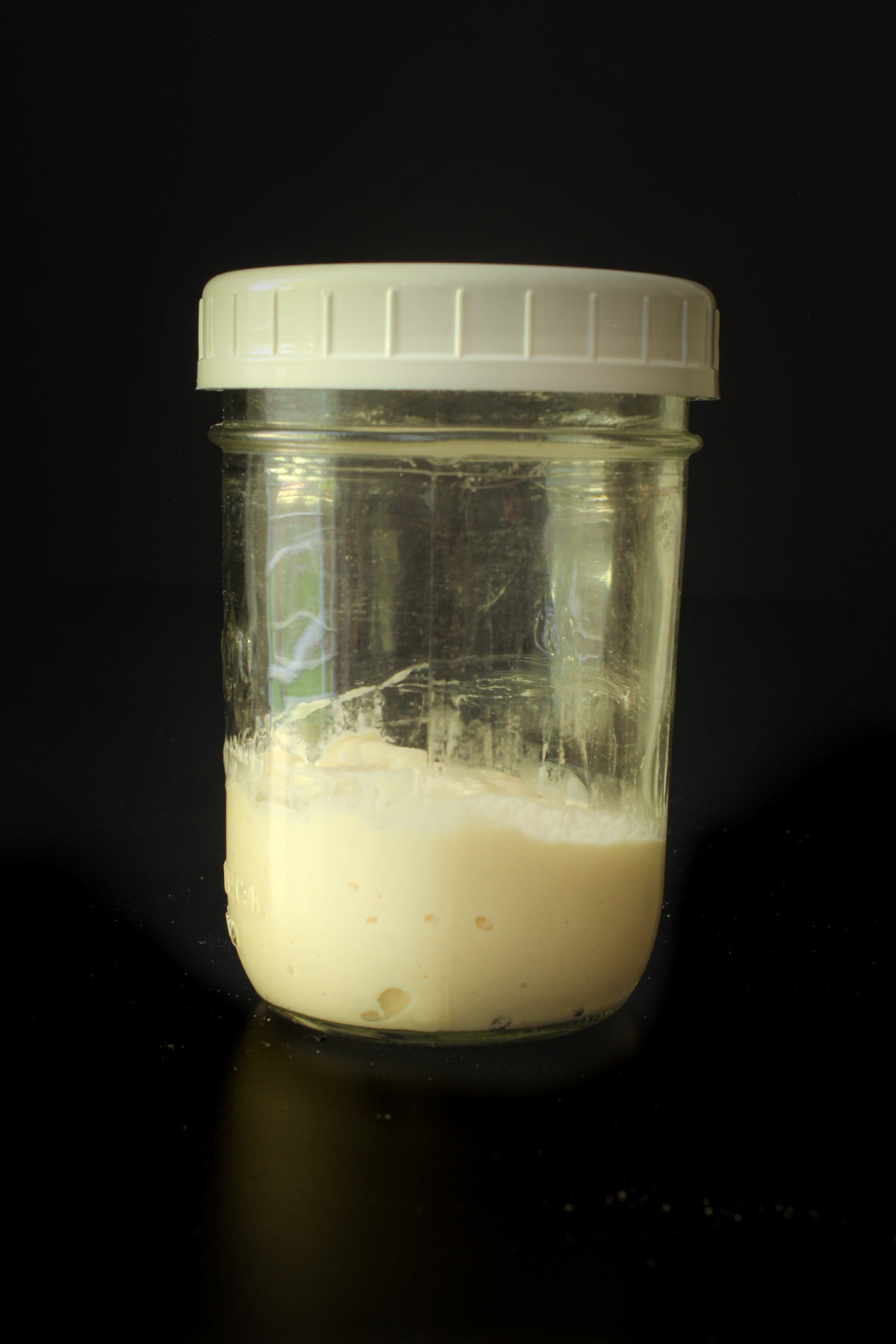
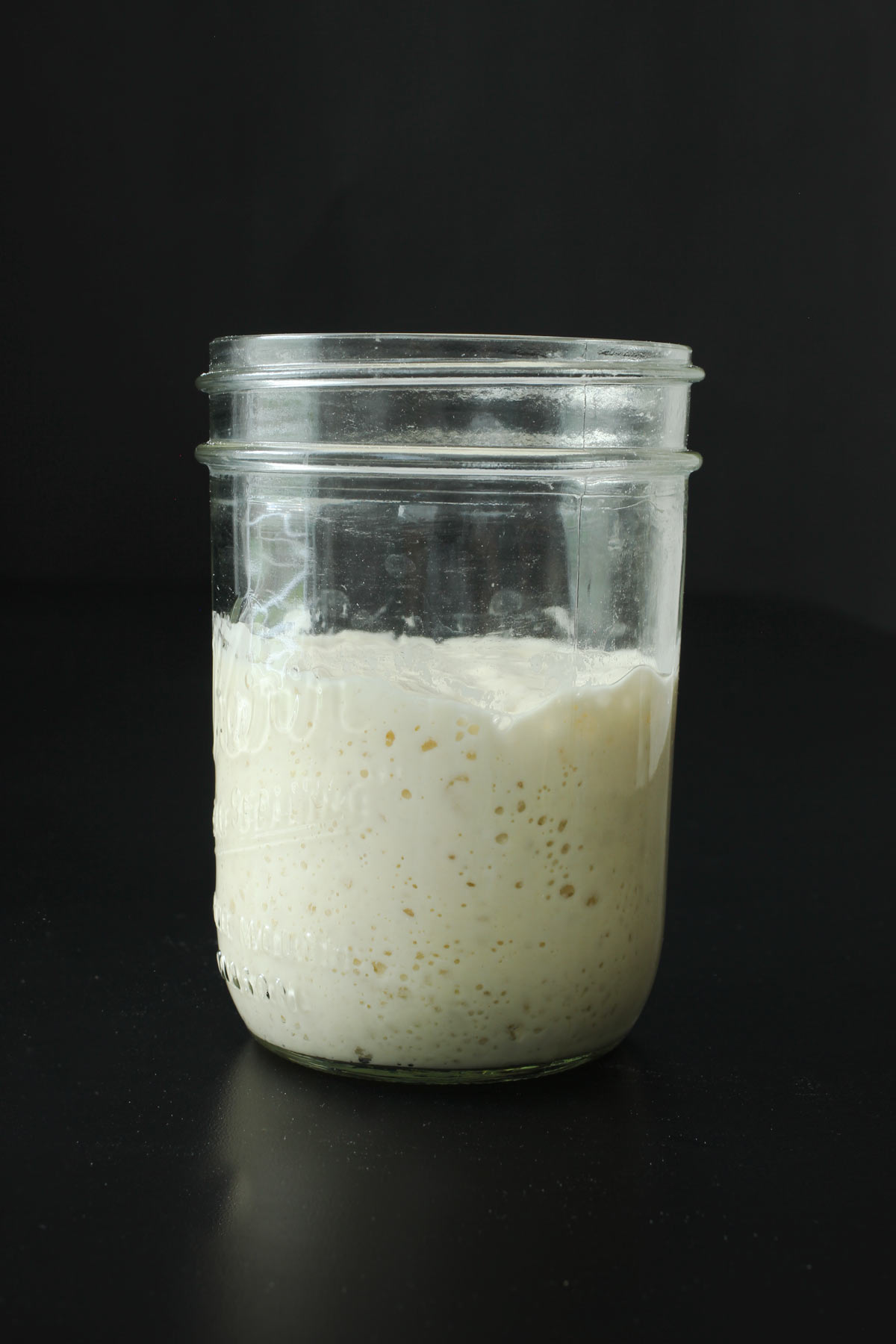
The left picture shows the starter right after feeding. The right picture shows the sourdough starter the next morning. You can see by the line on the glass that it has risen and started to fall a bit.
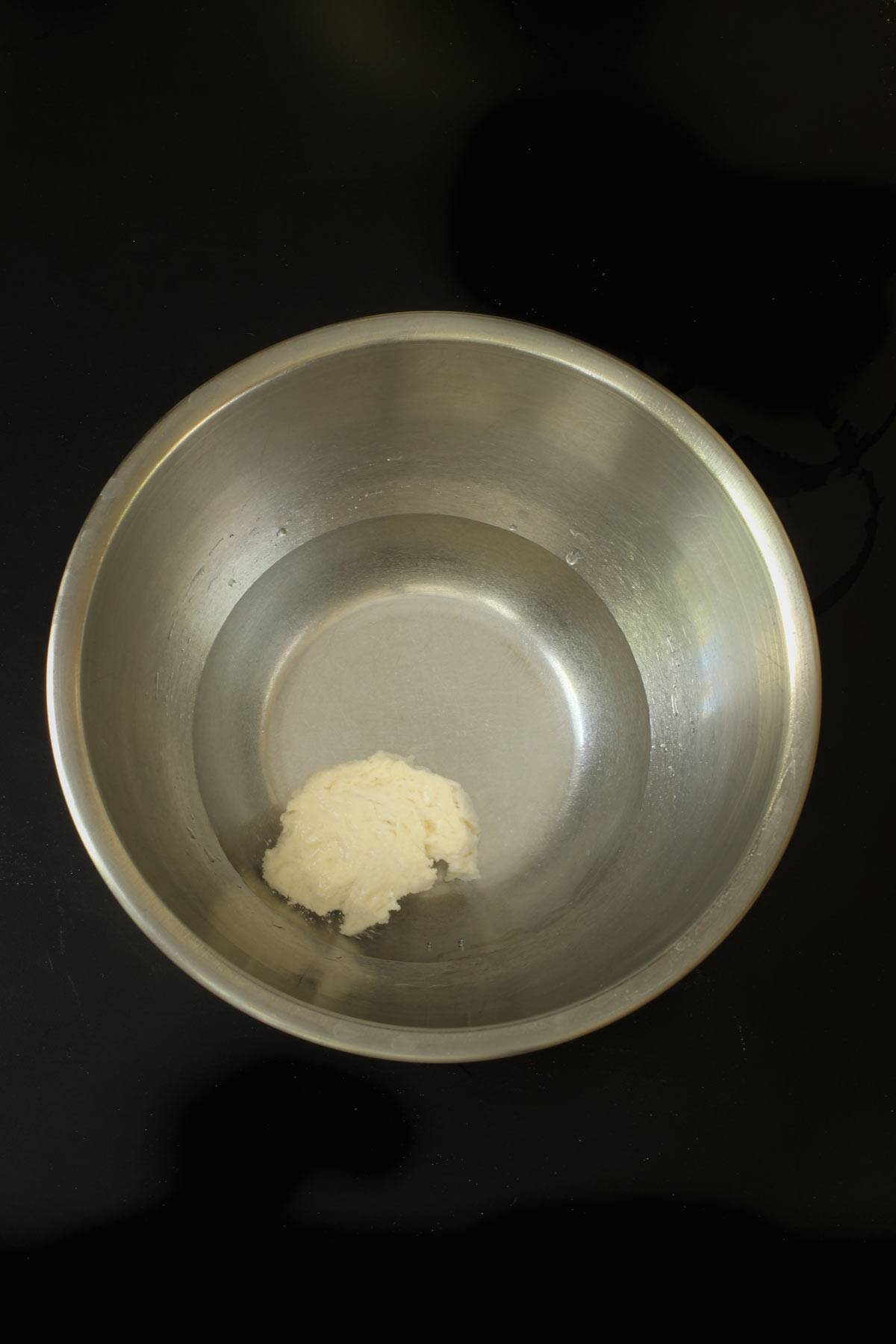
Tips for Success
- The starter is ready to use when it is bubbly, smells fruity, and has risen and fallen.
- You can also determine its readiness when a spoonful of starter floats in a bowl of water, pictured below.
- You can now use your starter in recipes. Once you remove the amount for your recipe, you’ll want to feed the starter again.
- I feed my starter once a week, keeping it in the refrigerator until I’m ready to use it. Since I bake pizza and bread on Friday nights, I typically feed some for bread dough the night before and use the discard in pizza crust.
- Depending on the weather and the temps in your home, you’ll need to play with the frequency of your sourdough starter feeding. Keeping a healthy sourdough starter is sometimes an art over a science.
- A light gray tinge or liquid on the top of the starter is normal. Just stir it in.
- However, if your starter starts to smell like nail polish remover or develops orange or pink coloration or mold, it has gone bad and must be thrown out.
FAQs
Sourdough starter not only adds a tasty, sour flavor to baked goods, but it also acts as a leavening agent in the place of commercial yeast. While some baked goods may call for both commercial yeast and sourdough starter, starter alone should be able to leaven the bread.
This process of baking sourdough bread without commercial yeast is also called natural yeast or wild yeast.
Baking with only starter to give lift to bread takes more rising time, but the resulting bread is said to be more easily digested. Some folks with gluten intolerance have reported being able to eat wheat bread leavened with sourdough starter without issues.
A sourdough starter can be prepared by combining water and flour and fermenting it at room temperature, capturing the wild yeast present in the air.
You can make one from scratch, following the King Arthur tutorial, get some from a friend with an active starter who is happy to share, or you can buy some sourdough starter on Amazon. You’ll also need a starter crock or other clean container with a lid.
The feeding process doubles the volume of starter. If you don’t use it up in an adequate way, you’ll end up with bigger and bigger amounts of starter. You can either discard half before you feed it or find some great recipes that use the discard.
The cookbook Artisan Sourdough Made Simple does a great job of providing you basic, hand-holding advice and includes some fantastic recipes.
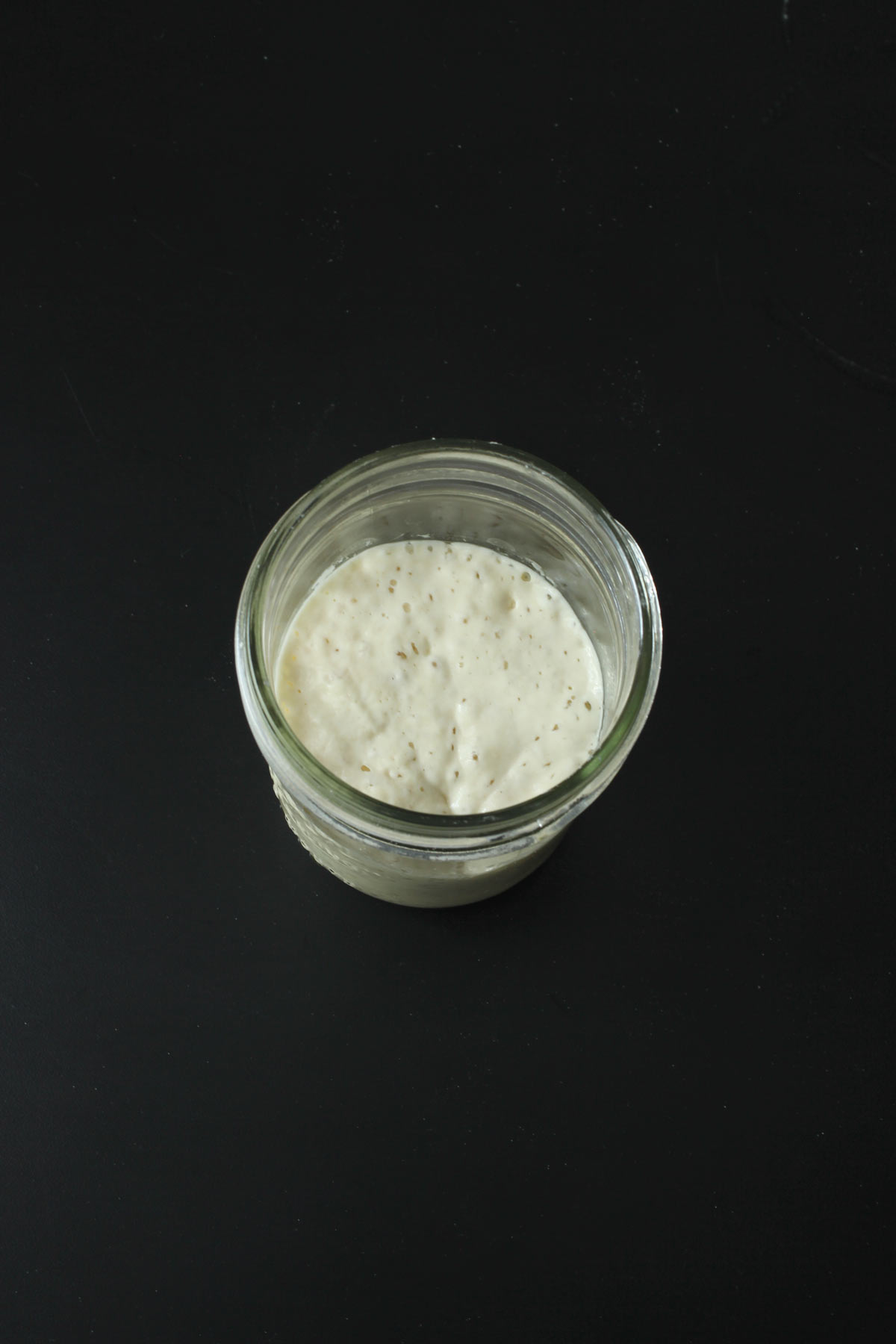
Sourdough Discard Recipes

Tell us what you think!
We love to hear your experiences with Good Cheap Eats. Click the STARS on the recipe card or leave a STARRED comment to let us know what you think of the recipe.
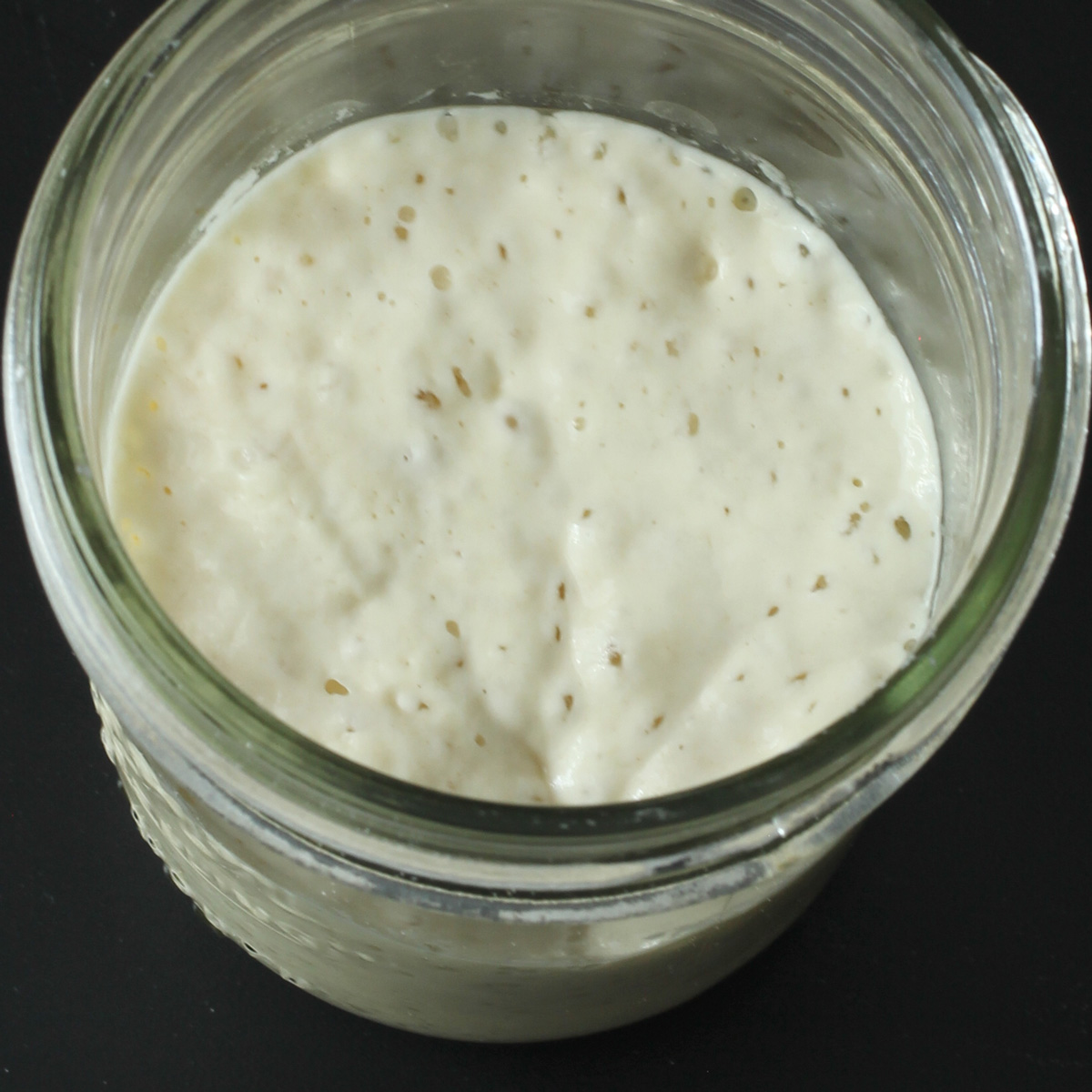
How to Feed and Maintain a Sourdough Starter
Ingredients
- 1 cup sourdough starter
- 1 cup unbleached, all-purpose flour
- 1 cup water
Instructions
- Purchase a sourdough starter and follow the directions to activate it.1 cup sourdough starter
- Alternatively, you can see if you have a friend who can gift you some starter. You only need about ½ cup to get started.
- Weigh your starter. Add an equal amount of flour and water to that measurement. Stir, cover loosely, and allow to sit at room temperature until bubbly. The starter will have a distinct yeasty aroma.1 cup unbleached, all-purpose flour, 1 cup water
- Once your starter is active and bubbly, you can use it in recipes.
- After you use your starter, you can discard half or use it in recipes that call for "discard".
- Use the starter continually in recipes, repeating the process of feeding it, at least once a week.
Notes
Nutrition
This post was originally published on May 20, 2019. It has been updated for content and clarity.


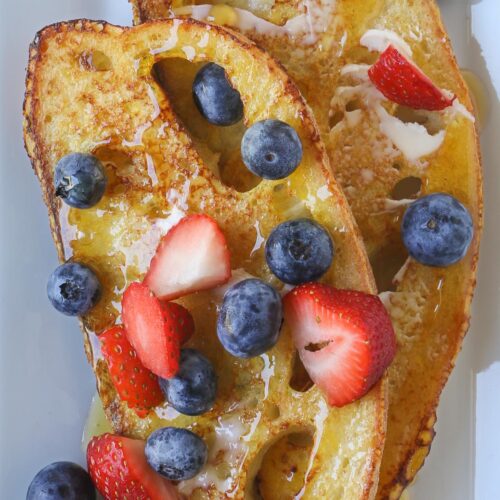
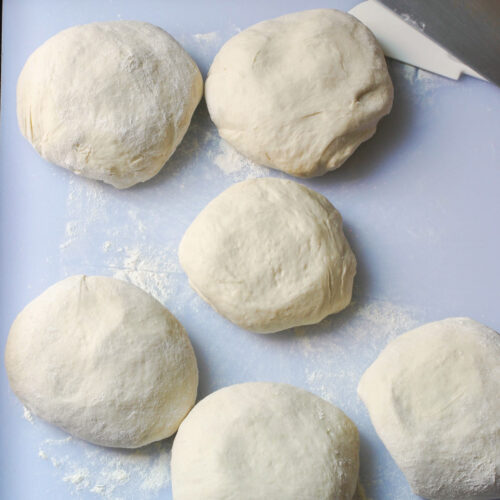


Michele
Can you use whole wheat flour?
Jessica Fisher
You can, but I haven’t had the best results with it. Tends to get heavy and not rise as much. I usually sub in a little less than half sourdough and it’s okay. Not as sour and the kids don’t like it as much as more unbleached.
Jeannie
Going to add that rice flour is key to having no dough stick stick to the towels. 🙂
Jessica Fisher
I have heard that! Just haven’t busted out the cash to get some. Need to remember to do that. Thanks for the reminder. So far, sticking hasn’t been bad.
Jeannie
I know I really didn’t want to shell out the dough- haha- but I mixed it with flour 50/50 and only use it for that purpose because well $$$. My cousin, who gave my starter and the book Tartine, explained that it would be much easier if I did the rice flour combo.
Thanks for sharing this timely post. I feel as if there’s such a learning curve with sourdough. I’ve never felt so inept as I have with trying understand and start sourdough. Artisan in 5 Minutes was just such a breeze for me that this is taking time for me to time and learn.
Jessica Fisher
That 50/50 idea is great! I need to bite the bullet. yesterday, I baked six loaves. Two stuck and four didn’t. I have no idea why.
MaryAnn Coy
Sounds great! But there are so many recipes to use up starter, I’ve never thrown any away. From pancakes to coffee cakes, to muffins & all kinds of baked goods that sour dough make totally yummy. I find it makes great tasting WW products. English Muffins are basically a sour dough product. The classic taste & the nooks & crannies, Thank you sour dough. They are griddle cooked & very easy. You are correct that wild yeast is more prevalent in some areas than others. Climate & prevailing winds. The trickiest part is getting a starter started. Time & patience required. That is why when our forebears had a starter, they would do whatever it took to protect it & keep it healthy. Plus a starter develops it’s flavor as it ages. The classic flavor builds over time. Keep looking for recipes to use your extra starter. It is a terrible thing to waste, the more things you use it in, the more your family will get spoiled for any baked goods that don’t have. Try making a loaf of cinnamon Raisin swirl bread ( soak raisins in hot water first), it’s as good as any cinnamon rolls with butter or cream cheese spread on it. Yum!
Jessica Fisher
I don’t throw it away. It took some trial and error, but we found some great recipes for “discard”. Will be sharing those later this summer/fall.
John andrus
Do you know that some or all of the people who are gluten sensitive might be able to eat sourdough. I am extremely sensitive and have been diagnosed with celliac disease and eat plenty of sourdough with no complications. Try a half slice and see if it bothers.
Jessica Fisher
Isn’t that exciting? Yes, I mentioned that early in the post. I know some people it doesn’t work for, but always so glad to hear when it does work.
Nicole
Thank you for this great tutorial! Do you know how long you can keep a sourdough (without feeding) in the fridge? I had started one and was great about feeding it weekly and then ran into a challenge and didn’t feed it for over 2 weeks. Will it still work when I feed it again or should I just start over? I am still a newbie and had only made one loaf of bread successfully prior to not feeding my starter weekly. Thanks again! I love your cookbooks and your website!
Jessica Fisher
Thanks for your kind words, Nicole. So far, I’ve only let it go 1 week (maybe 10 days) between feedings. I’ve read that it should be okay if it’s been refrigerated for longer. I’d definitely try it.
Linda Steinbaugh
Hi Jessica,
How do you handle your sour dough starter if you are on vacation? Do you toss it and start over, or do you stop the process in some way?
Thanks.
Jessica Fisher
I’ve not gone longer than a week/10 days between feeding it. If I were to go on an extended vacation, I would probably research how to freeze it and/or dehydrate it so I knew I had a back-up when I got home.
Linda
I have left it in the fridge for several months unfed. I took it out and fed it. It miraculously came back to life. I’ve been told it doesn’t always work though.